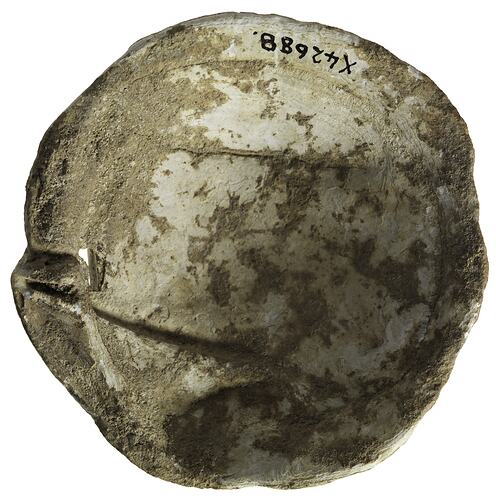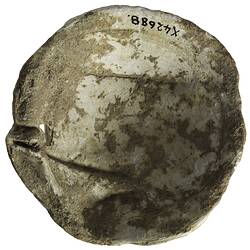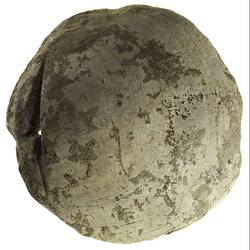Summary
Scrapers were used for a multitude of activities in Aboriginal daily life including scraping out canoes, hollowing out tortoise shells to make fish hooks, carving wooden artefacts such as clubs and throwing sticks, and sharpening spear tips. They could be made from a variety of materials, including broken pieces of robust shells to make a sharp edge, or whole shells with a strong lip or margin to withstand the pressure involved in scraping.
This fossilised shell, from the species known as Miltha (Milthoidea) Grandis, was found at Lake Boga in the Murray River Basin of north-west Victoria. This area is the Traditional Country of the Wemba Wemba people, specifically the Gourmjanuk (meaning 'along the edge of trees') clan.
Physical Description
Perforated fossil shell, Miltha (Milthoidea) Grandis.
Significance
The Wemba Wemba people, despite the devastating displacement that came with colonisation, have continued to live on their traditional lands in the Lake Boga area, continuing to hunt and fish as their people have for hundreds of generations. Today, Wemba Wemba people have an interest in managing cultural heritage at Lake Boga. There are many sites of cultural and historical significance which exemplify the Wemba Wemba people's presence in the area for many thousands of years, including campsites, middens, surface scatters of stone artefacts and burial sites.
More Information
-
Object/Medium
Scraper
-
Maker
-
Locality
-
Object Measurements
75 mm (Length), 75 mm (Width), 25 mm (Height)
-
Classification
-
Date Made
-
Maker
-
Clan/Language Group
-
Place Made
-
Indigenous Region
-
Keywords
-
Type of item
-
Discipline
-
Category
-
Collecting Areas


